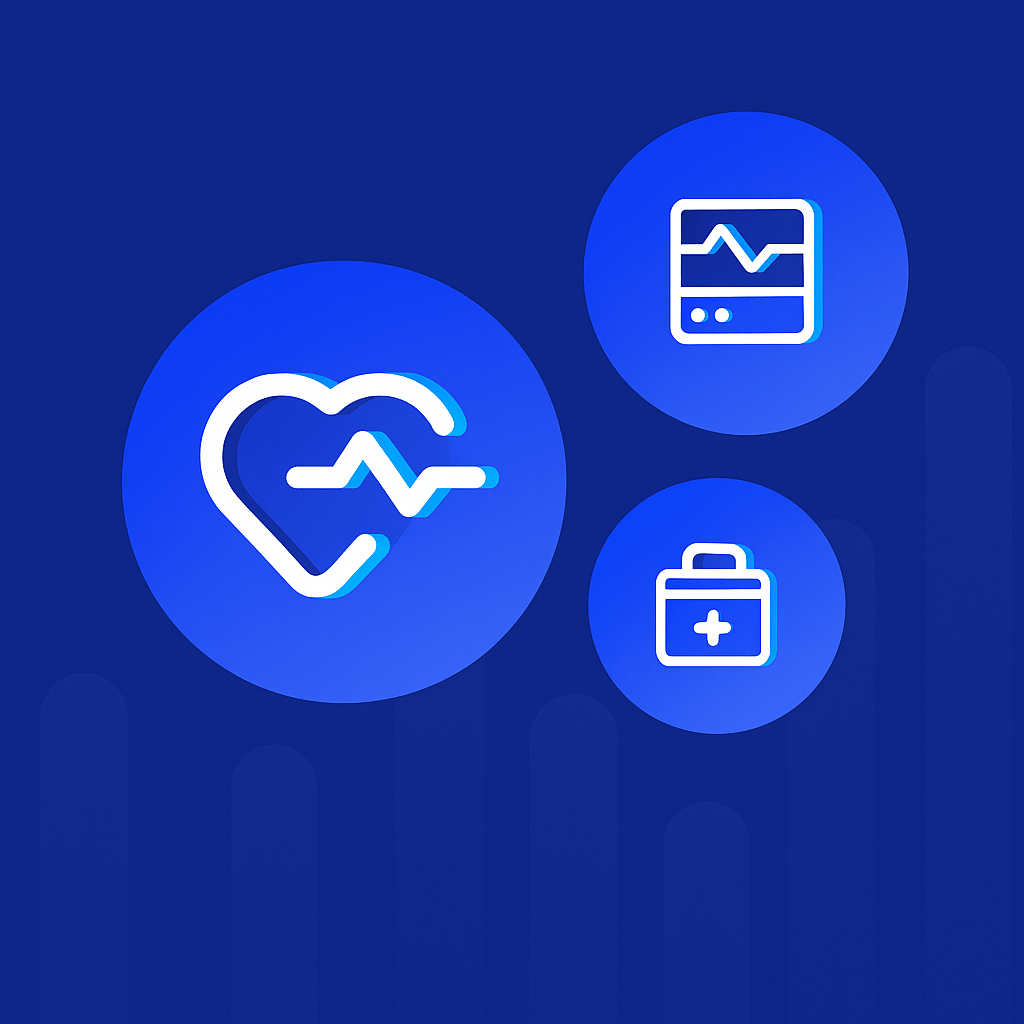
How Better Website UX Can Reduce Drop-Off for Healthcare Websites: 7 Concepts to Understand
Key takeaways
- A clean, intuitive design builds instant trust and reduces bounce rates.
- Accessibility isn’t optional. It’s essential for usability, SEO, and inclusivity.
- Clear navigation should guide patients toward their goals with minimal effort.
- Fast load times and mobile optimization are critical for retaining visitors.
- Strong, visible CTAs lead users naturally toward the next step.
- Continuous A/B testing and journey mapping help refine UX and boost conversions.
When someone visits your healthcare website, they’re not browsing for entertainment. Instead, they are often anxious, looking for specific information, or trying to book an appointment. If they can’t do that quickly and efficiently, they’ll bounce and do it somewhere else.
As someone who’s worked on dozens of healthcare websites in Webflow, I know that better UX can completely change that story.
In this article, I’ll share my experience and give you practical tips on enhancing UX for healthcare websites so you can reduce drop-off rates and keep visitors engaged from the first click.
1. Make the First Impression Count with Clean, Clear Design
According to one study, users judge a website’s credibility in less than 0.05 seconds. That means that first impressions form fast. For healthcare websites, this means that visitors determine whether or not to trust your platform at first glance.
A clean, well-organized design communicates professionalism and reliability in the healthcare sector. Visitors should immediately understand who you are, what services you offer, and how to take the next step. As such, you should avoid cluttered layouts or competing visual elements that distract readers from your main message.
Here’s how to create a clear, trust-building first impression:
- Use whitespace effectively: Give each element breathing room to reduce cognitive load.
- Stick to a consistent color palette: Neutral or pastel tones convey safety and care.
- Highlight key actions above the fold: Include visible CTAs that guide toward the next action.
- Keep typography simple: Avoid overly stylized fonts that reduce visibility.
By incorporating these modern healthcare design principles, your homepage will help visitors focus on what matters, trust your expertise, and convert them more efficiently.
2. Accessibility Is Crucial in Healthcare
Accessibility is one of the most important UX principles in healthcare because it ensures everyone, including people with disabilities, can access and navigate your site without barriers.
The most important accessibility features to consider include:
- Text-to-speech support for visually impaired users.
- High-contrast modes for those with color vision deficiencies.
- Keyboard navigation for people who cannot use a mouse.
In addition to this, you should also include screen reader compatibility, scalable fonts, and descriptive alt text for images to make your content readable to assistive technologies.
According to the CDC, 27% of US adults live with some form of disability. This means that accessibility improvements can directly impact more than one in four potential visitors. Beyond that, accessible design also enhances your site’s SEO, improves mobile usability, and shows empathy and care for all users, including those with disabilities.
3. Build Navigation Around User Intent
People typically visit a healthcare website with a specific intent in mind. Most come to book an appointment, check a provider’s availability, or learn more about a treatment or a condition. If you want to reduce drop-offs, you’ll need to build your navigation around those goals.
For example, when I plan navigation for a healthcare site, I typically start by listing the top five things visitors want to do. Those actions then become the foundation of the menu structure, keeping design simple, logical, and focused on conversion.
After that, our design team focuses on the following:
- Prioritizing clarity over creativity: Use familiar terms like “Find a Doctor” or “Patient Portal” instead of clever labels.
- Limiting menu depth: Keep navigation to one or two levels so users can find key pages quickly.
- Adding a persistent header: Important actions like booking, contacting the clinic, or buying a healthcare product should always stay visible.
- Adding a search bar: A well-configured search bar with suggestions should help users reach content fast when menus fail.
Today, many of the best healthcare websites also add easily accessible AI-powered chatbots that can provide quick answers to visitors or help guide them toward the next step.
4. Optimize for Speed and Mobile Responsiveness
Having a fast website is crucial for both SEO and visitor retention, regardless of your niche. According to Google, 53% of users leave a page if it takes longer than three seconds to load. It makes sense that this is a deal-breaker for healthcare visitors who are searching for quick answers and care.
Slow loading times create frustration and signal unreliability, while a responsive, mobile-friendly design will make your site feel modern and trustworthy. To achieve this, make sure to optimize images and enable lazy loading, minimize scripts, and test performance across devices to keep pages light and fast.
I also recommend checking how your site performs on mobile since most healthcare searches now happen on smartphones. With that in mind, forms should be simple, buttons large enough to tap easily, and pages should be adaptable to smaller screens.
5. Use Strong, Clear Calls-to-Action
To reduce drop-offs and ensure your visitors get a sense of progression, every page on your healthcare website should guide users towards the next step. Depending on what your website is about, this can be booking an appointment, finding a provider, or signing up for a newsletter.
When visitors land on a website, they typically have an action in mind, and the last thing they want to experience is hesitation. For best results, your primary CTA should be above the fold, repeated where relevant, and designed in a way that stands out visually from surrounding elements.
How you frame your CTA also matters. Here’s what works from my experience:
- Using direct language like “Book an Appointment” instead of generic phrasing like “Learn More” or “Click Here.”
- Keeping the same CTA style across pages for consistency.
- Making buttons large and mobile-friendly.
- Avoid hiding important CTAs in dropdowns or at the very bottom of the page.
6. Publish Content That Educates and Builds Trust
Patients often visit healthcare websites to learn, so clear, accurate, and educational content is what they are looking for. In their eyes, poorly written or outdated information erodes trust and shows a lack of credibility.
Writing high-quality copy and aligning your pages with the reader's intent is also important. For example, if someone searches for treatment options or recovery tips, the content should answer those questions immediately. To support your claims, make sure to include credible sources wherever possible.
Adding doctor bios, testimonials, and patient stories can further strengthen your brand and credibility. These are also elements that help Google evaluate your site’s E-E-A-T (experience, expertise, authoritativeness, and trustworthiness), which is especially important for YMYL content.
7. Show That Patient Data Is Safe
If patients share personal information on your healthcare website, trust and security must be visible at every step. Even if your platform is compliant behind the scenes, users need to know that their data is protected.
Here are several key things you can do to build that trust:
- Use HTTPS to ensure a secure connection.
- Add a privacy statement near every form explaining how information is stored or used.
- Show security badges or certifications if available and applicable.
Though keep in mind that not all healthcare websites collect patient data or need to be compliant with safety standards like HIPAA. In fact, Flow Ninja has built several high-performing healthcare websites that don’t collect patient data, including Klara, Juniper, and Pilot.
Practical Tips to Test and Optimize Your Healthcare Website UX
Improving UX is an ongoing process, so once your site is live, testing and optimization should become part of your regular workflow.
Here’s what we focus on at Flow Ninja when working on our clients’ websites:
- Running regular A/B tests: Testing one element at a time, such as a button color, headline, or form layout, works best to identify what drives higher engagement or conversion.
- Tracking visitor journeys: Mapping the steps visitors take from arrival to booking or exit with Hotjar or through GA4.
- Fixing friction points: Simplifying forms, improving load times, and clarifying CTAs where users tend to leave will make a big difference.
- Using data and feedback: Combining analytics data like bounce rate with qualitative insights from heatmaps and surveys.
- Re-testing after changes: Testing after every improvement provides fresh data for the next steps.
Bottom Point
A great healthcare website should look good, but it should also feel effortless to use. Your visitors should find what they need quickly, trust what they see, and know exactly where to go next. When your website is fast, clear, and secure, the UX and conversions will follow.
If your current website feels outdated or underperforms, it might be time for a UX refresh. At Flow Ninja, we design and build healthcare websites that convert visitors through thoughtful, data-backed design. Let’s talk about your next project.
FAQ for Healthcare Website UX
What’s the biggest reason patients leave a healthcare website?
Healthcare website visitors tend to leave when they encounter friction, such as slow loading times, confusing navigation, or unclear next steps. These issues make it harder to find information quickly, leading visitors to abandon the site for a competitor that feels easier to use.
How can I tell if my website’s UX is actually working?
Track key performance metrics such as bounce rate, average time on page, and conversion rate. Heatmaps, session recordings, and user surveys also provide valuable insights into how visitors move through your site and where they get stuck.
What’s the easiest UX change that makes a difference fast?
Optimizing page speed usually delivers the fastest results. Compressing images, reducing scripts, and simplifying navigation can also reduce drop-offs and make your site more reliable and easier to use.
How often should I test or update my UX?
UX should be reviewed continuously, not just during major redesigns. Regular quarterly audits and small, data-driven tests will keep your website aligned with current user expectations and modern design and UX standards.
What tools can help me evaluate my website’s UX?
Google Analytics tracks engagement metrics, while Hotjar and Microsoft Clarity visualize user behavior through heatmaps and session replays. Lighthouse and PageSpeed Insights can help you diagnose performance and accessibility issues.
How does UX affect SEO for healthcare websites?
User experience directly impacts SEO because Google prioritizes websites that are fast, mobile-friendly, and easy to navigate. A well-structured UX also keeps users engaged for longer, lowers bounce rates, and signals trustworthiness to search engines.






.svg)









.png)
.png)
.png)








.svg)

.png)
.png)
.webp)
.svg)

